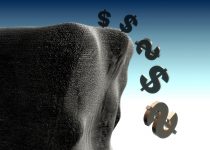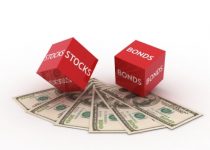Stock Trading Terms – The Basics and Definitions
An understanding of the basic stock trading terms is a big part of your success in the industry. Stock trading basics include familiarization of the basic terms used in the stock market, the types of orders, and choosing a broker that suits your financial and technical needs.
Stock Trading Terms
- Bid
In the stock market, the buyers and sellers are always competing to get the best prices for themselves. The bid is simply the price at which the buyers are willing to buy.
The bid is also important when you are selling stocks since it is the price that buyers are willing to pay you per stock. It determines your profit or loss in a given trade.
- Ask
The ask is the price at which the sellers are willing to sell their stocks. It is also important to take note of the ask price when you’re looking to buy stocks since it is the price that the sellers are willing to sell.
- Spread
The spread is the difference between the bid price and the ask price. It is important to choose a stock that has a spread of $0.01 to $0.06. By keeping it that way, you would be able to buy or sell a commodity close to the price that you want.
The price of the stock is determined by the “fight” of the buyers and sellers. Naturally, the buyers want to buy stocks at a lower price while the sellers want to sell stocks at a higher price.
- Open
The price at which the market has opened at. It is the first price traded after the market has opened for the day.
- Close
The price at which a stock has closed for the day. It usually is the last price traded before the market has come to a close.
- Percent Change
The percent change shows how much a stock has increased or decreased in price from the previous close.
- Volatility
Volatility refers to how fast the stock’s price to move up or down, that is to increase or decrease. The more volatile the stock, the better it is for traders to gain profit (or lose money).
- Liquidity
Liquidity talks about the number of shares being traded in a single day for a certain stock. You always want make sure that you buy a stock that is being traded with a good amount of volume to allow yourself to be able to sell it quick.
- Volume
The volume talks about how many “hands” are trading for a certain stock. A good volume to look for is from 300,000 to 3,000,000.

Buying Stocks
In order to buy stocks, you need to sign up for a brokerage account. Online brokers are not the same in the way they charge commission fees and the tools they provide.
TD Ameritrade, for example, does not require a minimum balance when opening an account. They offer Think or Swim, a trading platform that provides charts, stock screener, and level 2. It comes free of charge when you open an account with them.
Etrade, on the other hand, requires an initial deposit of $600 to open an account with them. They also offer upgrade to Etrade Pro which comes with a monthly fee but has all the tools you need for trading. It is entirely up to you which online broker you would want to open an account with.
Selling Stocks
In your brokerage account, there is always an option to sell stocks after you have bought them. Keep in mind that you also have to pay the fee even when you’re selling you’re shares. So for example, if you have a TD Ameritrade account, that’s a fee of $9.99 for buying stocks and another $9.99 for selling the stocks.
Types of Trading Orders
Limit Order
A limit order is when you set the price you are willing to pay for the shares. You will often have a choice on your trading platform to set it to a limit order.
For instance, you can place a limit order of 500 shares at 85 cents per share. This means that you are telling your broker that you only want to buy those 500 shares when the price is trading at 85 cents.
Always use limit orders since they are generally less risky than market orders. However, keep in mind that when the ask (the price that sellers are willing to sell) price is higher than your limit order, your trade order will not take place at all.
Market Order
A market order takes place when you agree to pay the best available price for a stock. For example, if a stock has an ask price of 90 cents, you are telling your broker that you want to purchase it at that price immediately.
The downside for this type of order, however, is that you don’t have enough control of how much you pay since your broker automatically executes the order at the best available price






